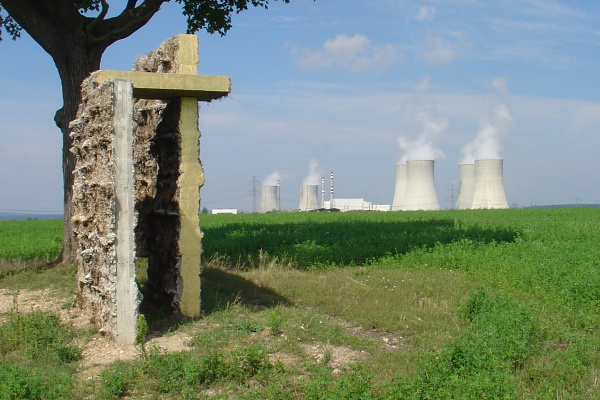
Tam kde cas koncí
Tam kde cas koncí
a vecnost zacíná
je ona krajina
Kde každá vidina
stává se skutecností –
prítomnou budoucností
Kde clovek žasna
listuje v oblacích
v tajemné knize knih
a chápe
jak dohrát má svou roli
(Josef Jelen, Letokruhy, 2006) |
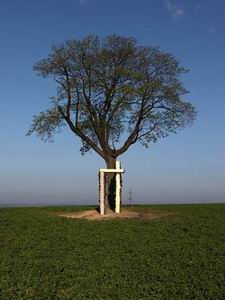 |
Do not stand at my grave and weep;
I am not there. I do not sleep.
I am a thousand winds that blow.
I am the diamond glints on snow.
I am the sunlight on ripened grain.
I am the gentle autumn rain.
When you awaken in the morning's hush
I am the swift uplifting rush
Of quiet birds in circled flight.
I am the soft stars that shine at night
Do not stand at my grave and cry;
I am not there. I did not die.
(unknown author) |
Kríž vedle jaderné elektrárny v Dukovanech? Nejde o protest, ale o návrat kríže do krajiny, na místo, kde vždy byl. Jenže tentokrát klasickou podobu nahradil kríž a brána zároven. Autor, Ivo Pavlík, prihlásil svou realizaci do souteže mladých architektu Young Architect Award 2010.
Kríž v jeho predstave je soucástí brány, která v sobe nese jeho význam a novou symboliku - predstavuje pomyslnou hranici mezi životem a smrtí, místo, za nímž je možné být rozptýlen. Pruchod bránou, která smeruje z východu na západ, znamená dostat se na "druhou stranu".
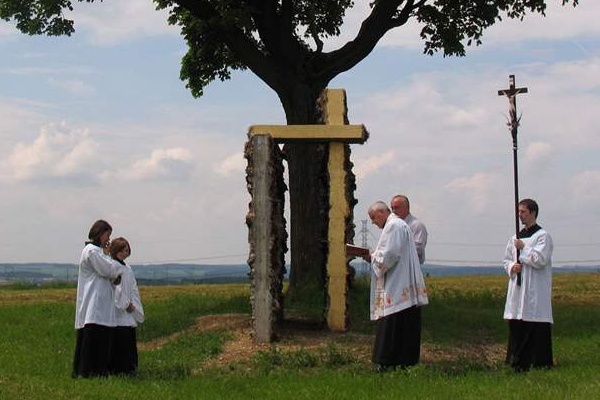
Je možné se zde nechat rozptýlit prímo do krajiny. Nejde o ohranicenou rozptylovou loucku, ale primárne o akt pruchodu skrz… Pres bránu není prímo videt díky stromu. Brána souvisí se hrbitovem, napojuje se na cestu od hrbitova, která tam vždy vedla. Za bránou však žádná cesta není…
Technologie
Steny a preklad brány byly vylity z betonu do bednení z balíku slámy, které byly letos 10. ledna v 1 hodinu odpoledne zapáleny. Ohen spálil slámové bednení, zabarvil a odhalil strukturu sten: vznikl popel! Východní strana steny, která vytvárí s prekladem kríž, byla vyzlacena plátkovým zlatem. Tím kríž vynikl.
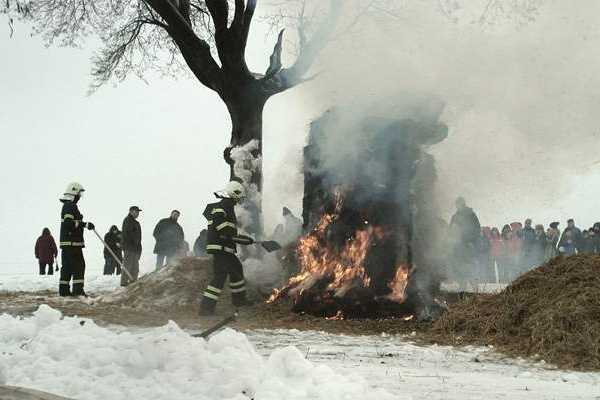
Historie místa
Místu bývalé križovatky cest na kopci se již radu let ríká U kamenného kríže. Ten zde byl od roku 1818 do roku 2005, kdy byl premísten do obce. Predtím tu stál (patrne) drevený kríž, jak lze soudit podle dochovaných map z roku 1768. Jde o nejvyšší bod v okolí obce na jejím katastru s nadmorskou výškou 385 metru nad morem. Místo U kamenného kríže bylo dríve križovatkou cest. Krížily se zde tri cesty, kdy jedna vedla z obce Dukovany, druhá od kríže do obce Hermanice, dnes již zaniklé kvuli stavbe jaderné elektrárny. Tretí cesta vedla do obce Horní Dubnany. Všechny cesty byly zrušeny pri stavbe vlecky k jaderné elektrárne, která vede ribližne ve stope puvodní cesty. V dusledku toho byla zrušena i cesta smerem od kríže k obci, která vedla " jen ke kríži".
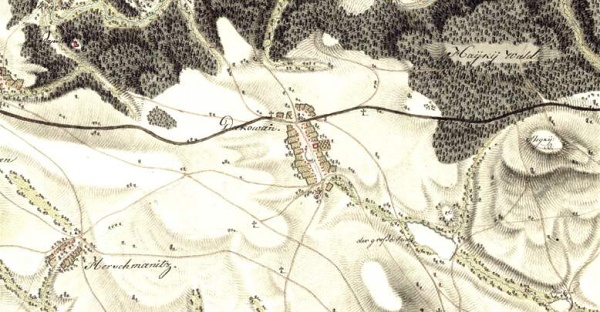
Praveké nálezy v míste
V míste U kamenného kríže byly zjišteny nálezy ze dvou období:
Strední paleolit: 40 000 pr. n. l. Z tohoto období zde byl zdokumentován nález tzv. jednolícího sekáce z úlomku kvarcitu.
Mladší paleolit: 40 000 - 10 000 pr. n. l. Bylo nalezeno 24 nástroju.
Keš je drive-in. Naleznete ji u cesty podél železnicní vlecky. Strom a kríž pod ním se nachází na nejvyšším bode za tratí.
[EN]
Cross near the nuclear power plant in Dukovany? This is not a protest but a return of the cross to the countryside, to the place where it has always been. But this time the classical form of the cross has been replaced by both a cross and a gate as well. Author, Ivo Pavlik , registered his realization in the Competition for Young Architect Award 2010.
In his vision the cross is a part of the gate, which carries its meaning and new symbolism - it represents imaginary boundary line between life and death, a place where it is possible to be dispersed. Passing the gate, which is oriented from the east to the west, means to get to the “other side.”
It is possible to be dispersed right into the countryside. This is not a bounded stray field, the main point is the act of passing through the gate... Due to a tree it is not possible to look through the gate. The gate is connected to a graveyard, it is linked up to a path, which has always been there. But there is no path behind the gate...
Technology
The walls and the lintel were poured out to the form made of straw bales. They were lighted up on 1st January this year. The fire burned the straw form, coloured the walls and revealed their structure, some ash was produced. The eastern side of the wall, which forms the cross was covered by gold . This is how the cross was created.
History of the place
The former intersection of roads on the hill was called By the stone cross. The cross stood here from 1818 to 2005, when it was relocated to the village. According to old maps from 1768 there was an old wooden cross before. It is the highest point of the village area with the altitude of 385 metres above the sea level. The intersection of three paths was destroyed when they were building the power plant.
Prehistoric findings
At the place By the stone cross some findings from two prehistoric periods have been made: tools from the Middle Paleolithic -40 000 BC and Younger Paleolothic - 40 000-10 000 BC.
It is a drive-in cache. You can find it beside the road along the railway siding. Tree and the cross below it is on the highest point behind the track.